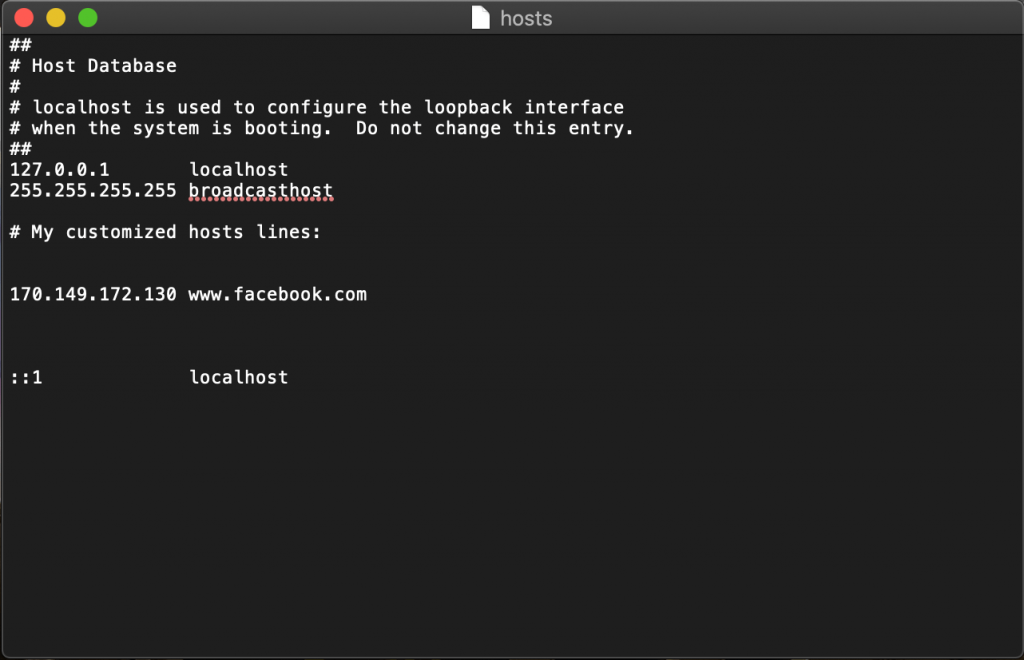

- #MAC OS LIST FILES TERMINAL HOW TO#
- #MAC OS LIST FILES TERMINAL ZIP#
- #MAC OS LIST FILES TERMINAL MAC#
Then exit the hosts file in Terminal by pressing Ctrl-x. This will bring up a prompt for the file name to write to:ħ. To save the hosts file after editing the entries, press Ctrl-o. In the following example, I am adding an entry to display a copy of a website residing on my local server, rather than where the DNS is pointing.Ħ. Use your Arrow Keys to move the cursor to a blank space at the bottom of the hosts file, and enter your new mapping here. A couple of default mappings will also appear in the window, such as the entry 127.0.0.1 for localhost.ĥ. The lines starting with the hash (#) symbol are comments and are not to be edited. To move throughout the hosts file, use your arrow keys to move up and down. The hosts file will display in the Terminal window: Terminal will now ask you to enter your Administrator Password:Ĥ. Open Terminal and to open the hosts file, enter the following command:ģ. Cmd+spacebar to open Spotlight and search for TerminalĢ.
#MAC OS LIST FILES TERMINAL HOW TO#
The steps below outline how to change your hosts file in order to view a website located on a different server than the live version.īelow is a quick reference on how to go about editing your ETC / Hosts file in Terminal (Mac):ġ. That’s the low down, the more common compression packages available will typically be covered in one of the above.From time to time you may find that you need to view a website that is hosted locally.įor instance, when conducting page load speed tests for a client, we first created a copy of their website on our servers to test the differences in the hosting resources between the two servers to determine if changing hosting providers might positively increase their site’s overall speed. You can also use a number of different formats for creating a. To Eject hdiutil eject /Volumes/archive_name/ To create hdiutil create -format UDZO -srcfolder folder_to_compress archive_name.dmg This one is macOSnative only – for a GUI interface use /Applications/Utilities/Disk Utility – for command line use:

To extract gunzip archivename.gz DMG – macOS Only To compress tar -jcvf archive_2 folder_to_compress To extract tar -zxvf archive_ TAR.BZ2 – Cross PlatformĪ variation on TAR GZ but with better compression than both tar.gz and zip. To compress tar -zcvf archive_ folder_to_compress
#MAC OS LIST FILES TERMINAL ZIP#
Second up is TAR, an old favorite on Unix/Linux – you add the GZ for the compression – compresses tighter than zip ds store files, use the “-X” option in the command so: zip -r -X archive_name.zip folder_to_compress TAR.GZ – Cross Platform
#MAC OS LIST FILES TERMINAL MAC#
If you want to make a zip without those invisible Mac resource files such as “_MACOSX” or “._Filename” and.
:max_bytes(150000):strip_icc()/ScreenShot2019-01-03at3.13.16PM-5c2ea61c46e0fb0001abc508-fb8027cc5efa44e2a3c858234aac1ae3.jpg)
To compress zip -r archive_name.zip folder_to_compress ZIP – Cross Platformįirst up is ZIP one of the most commonly used compression techniques used across all platforms Here are some built-in compression applications you can use including zip, tar, gz, bz2, gz and dmg.

A compressed file which contains files and folders is generally referred to as an archive. The default command line application interface in macOS is the Terminal and is stored in /Applications/Utilities.įile and folder compression saves on file size and ensures the contents are captured and delivered or stored as one monolithic file. Since macOS is based on Unix there are a number of ways to compress files and folders within the filing system using Unix based application code, below are a few options using the Terminal or command line interface (cli).


 0 kommentar(er)
0 kommentar(er)
